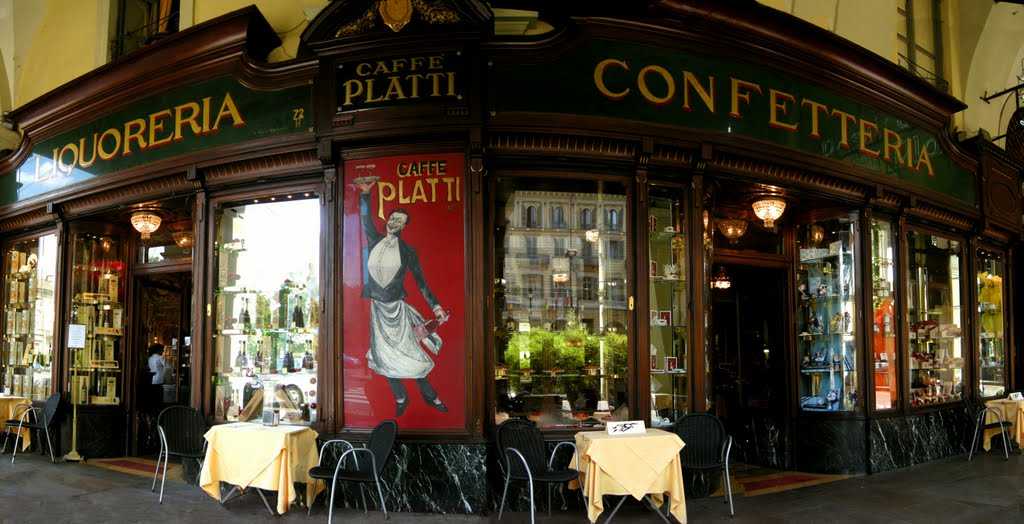The distinction between chocolate, coffee and pastry is becoming increasingly blurred, with the traditional business of buying a tray of petits fours to take away being replaced by new formats. And the market is growing.
“Things are booming in Italy and abroad, with the difference that in Italy there is still a big market for chocolate as an impulse purchase,” says Marina Berbotto head of marketing and training at Selmi.
“These have been difficult years, but those who have worked hard to improve the quality of what they sell are now reaping the rewards.
Consumers want to know where everything comes from and they love it when zero-miles ingredients are used. Whether the speciality is Piedmontese walnuts or Sicilian citrus fruits and pistachios, it’s all about quality.
And organic farming will also play an increasingly key role in the future, not just in the pastry business.
On top of that, young people are showing a renewed interest, influenced in this by certain popular TV shows, while schools are training up a new generation of skilled works. The future is looking bright.”
In a field in which aesthetic and sensorial appeal (flavour, texture, aroma) have always been extremely important, the way the experience is communicated is extremely important: “one reason being,” Barbotto goes on, “that a higher price and more sophisticated packaging are the contexts in which a quality product will be sold.”
You have to tell a story and you have to let people see how you make everything. A good example of this is Bean to Bar, featured at Host2015: whole production processes were carried out on the stand, demonstrating how the raw bean is turned into the final chocolate bar using Selmi machinery.
The bean was roasted, peeled, ground and mixed with various ingredients (sugar, vanilla etc.) then wrapped up and given away to visitors.
“It was a great success and one that can be replicated in artisanal workshops: Selmi supports artisans by providing know-how as well as machinery; it runs training courses and also supplies information on where best to source ingredients.” It’s all part of the new-millennium trend of personalising the product being sold.
It will be interesting to see what the future holds, now that we have 3D printers, with more and more refinements for the food industry, making it possible to use chocolate and sugar to produce a whole range of daringly complex, highly eye-catching forms.
But personalisation also means catering to new consumer demands, especially those dictated by health issues or lifestyle choices.
And firms are indeed picking up on this trend. Babbi, for example, is focusing on wholesomeness and ethical choices, with its Vegan Ok products and basic kits for cold desserts like Riso Natura that are gluten-free, contain no milk by-products or sucrose (which is replaced by fructose) and are totally plant-based.
So it’s a question of each to his own, also in the confectionery business, one that is rapidly losing its traditional “seasonal” nature, as Alessandro Perli, head of Italy sales for Scotton: “For Easter we have presented natural, neutral colours, such as creams, pearl grey and the nude look, which means that products can be sold on a more continuous basis and are less bound up with the notion of the seasonal celebration. Customers now rationalise their shopping and tend to prefer more versatile products that offer them more continuity.
But the trend towards enhancing traditional food products is also leading to changes in packaging, such as clear PVC boxes. And depending on the particular market, there are also other trends, such as minimal products, boxes made of natural kraft cardboard, and products that take eye-catching appearance to the extreme through the use of shiny bright colours.”
The important thing, of course, is making sure that supply coincides with demand, something Host is very good at: “Here we have met all kinds of tradespeople: wholesalers, manufacturers and salespeople, often operating in sectors it is not always easy to reach through our normal channels, so it was an opportunity for us to see a whole new side of the business,” Perli says.
So the world of desserts,which once looked as though it was going to be written off as old-fashioed and unappealing, is keeping up with the times. Instead of disappearing into the shadows it has made huge changes to satisfy new consumer needs.
Confirmation of this comes from Ufficio Studi Fipe, a study centre that has even highlighted shortages in the workforce the industry needs.
In Italy today there are 19,059 ice-cream parlours and pastry shops (74% of them just selling ice cream), a growth of 3% on 2010, and there are 22,000 bars that are cafés, ice cream parlours and pastry shops rolled into one, generating sales totalling 4.6 billion euros.
Ice-cream parlours and pastry shops employ 93,000 workers, an average of 2.3 per establishment, many of whom are young people (42.9%) and with a strong female presence (43.2%).
















